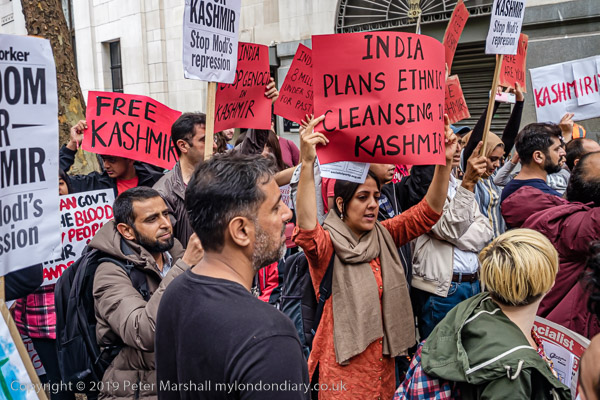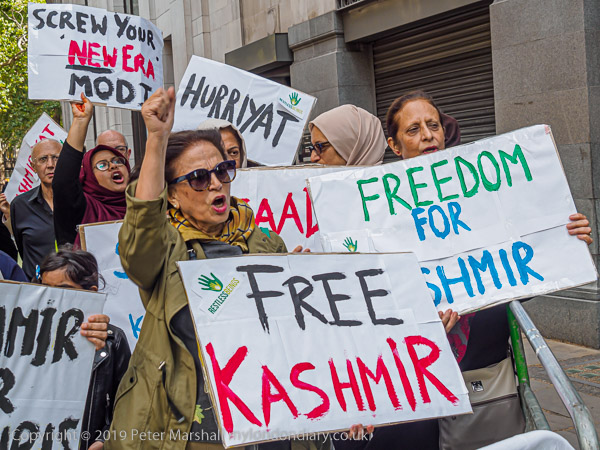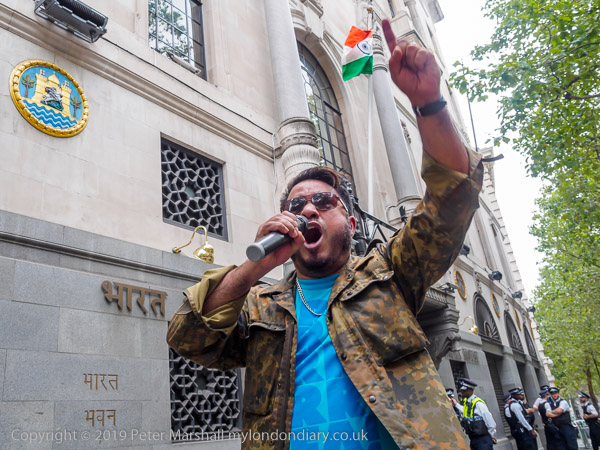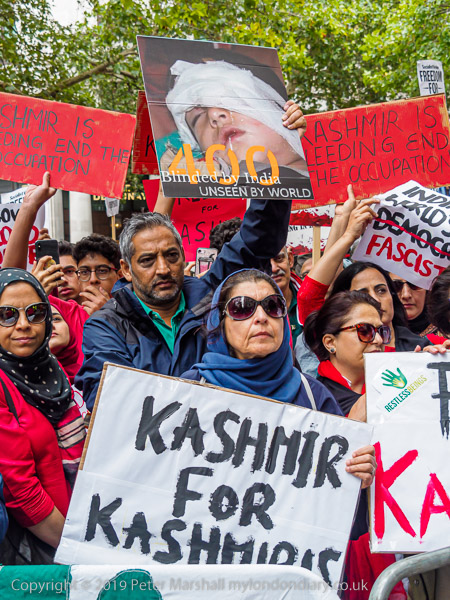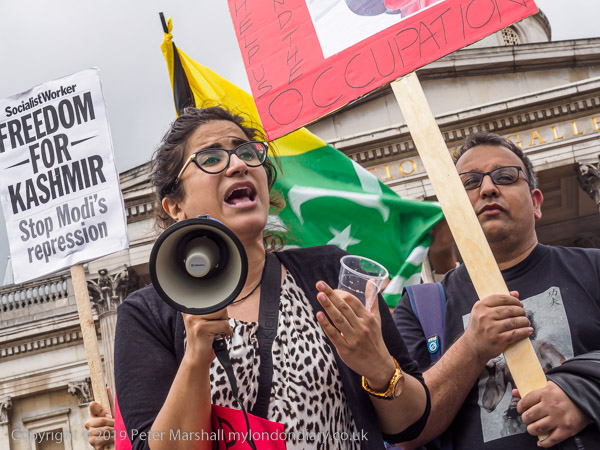Kashmir Indian Independence Day Protests: A large protest outside the Indian High commission by Kashimiris blocked Aldwych on Thursday 15th August 2019, Indian Independence Day, against arrests and human rights abuses in Kashmir. Later people protested in Trafalgar Square.
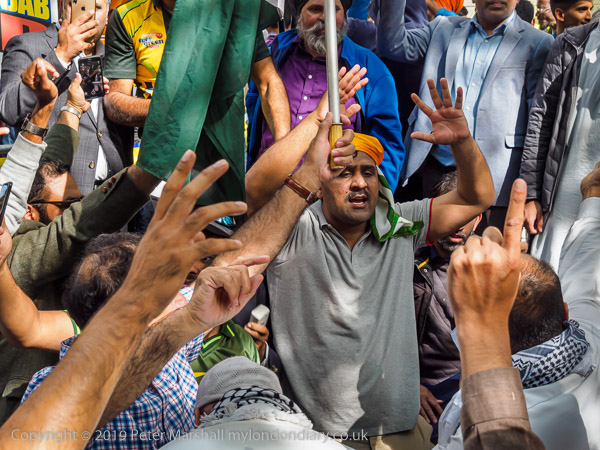
Various groups came to condemn Indian Prime Minister Modi’s revocation of Article 370 of the Indian Constitution and call for freedom for Kashmir which has been occupied for many years by over 700,000 Indian troops. They want the rights of the Kashmiri people respected and UN resolutions implemented.
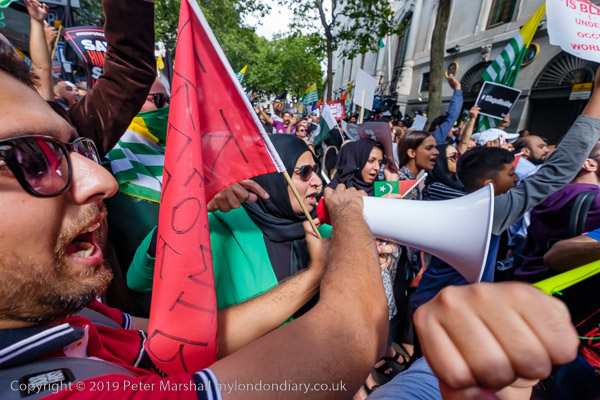
India celebrates Independence Day annually on 15th August, the anniversary of the day when that country gained independence from the United Kingdom on 15 August 1947, though it was only in January 1950 that it removed the British King as head of state (which is celebrated on Indian Republic Day on 26th January.)
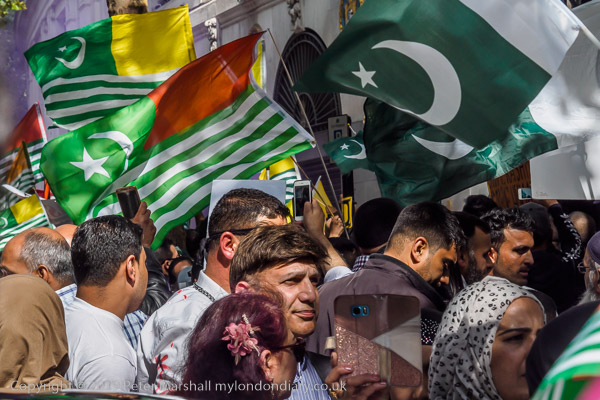
15th August 1947 was also when India was partitioned into India and Pakistan, an event with violent riots and many deaths, with around 15 million people being displaced from their homes due to religious violence.
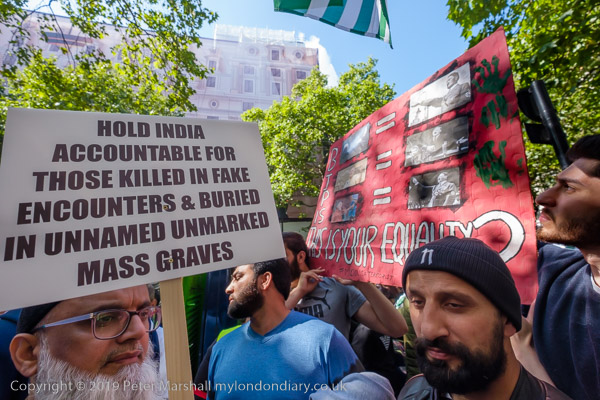
In 1947 Kashmir was a ‘princely state’ ruled by a maharajah and a part of Britain’s Indian Empire. Over three-quarters of its population were Muslims and it was expected to become part of the new Pakistan, but after Pakistan began to use guerrilla soldiers to try to force the decision the ruler turned to the British Governor-General for military assistance. Mountbatten only gave this on condition that Kashmir would become a part of the new state of India.
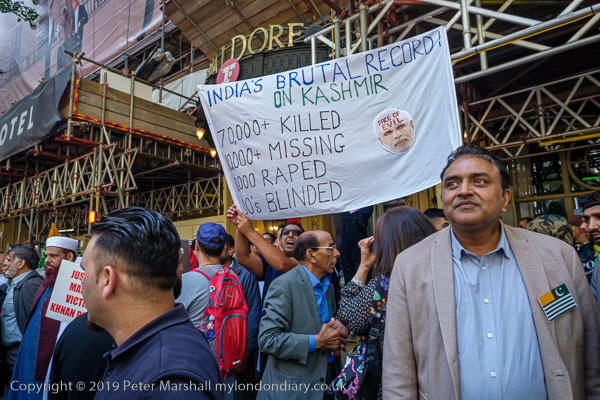
Indian soldiers came and cleared out the Pakistani irregular soldiers from most of the state. But despite UN intervention there has been no real resolution, with two further wars over Kashmir and a continuing huge and repressive military occupation with huge levels of arrests and human rights abuses.
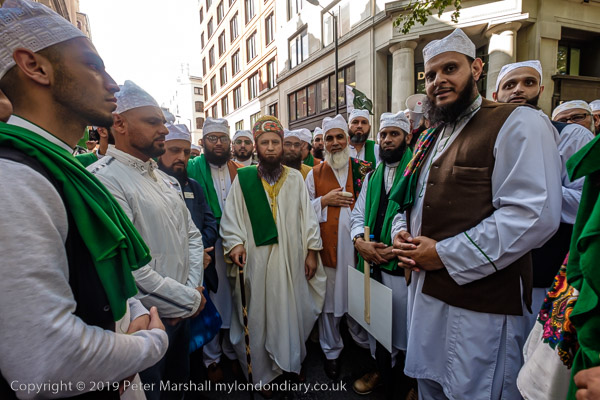
India now controls around half of the former princely state and Pakistan around a third with the rest being under Chinese control since the 1950s. China had never accepted agreements made in the late 19th century about the eastern region of Kashmir.
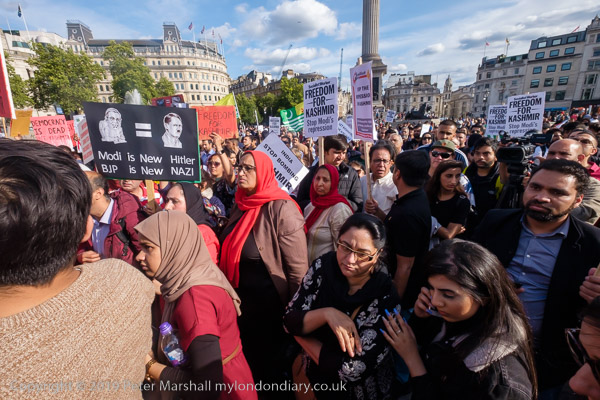
Under Article 370 of the Indian Constitution Kashmir was given special status with limited autonomy and UN resolutions called for a referendum to decide the future of the state.
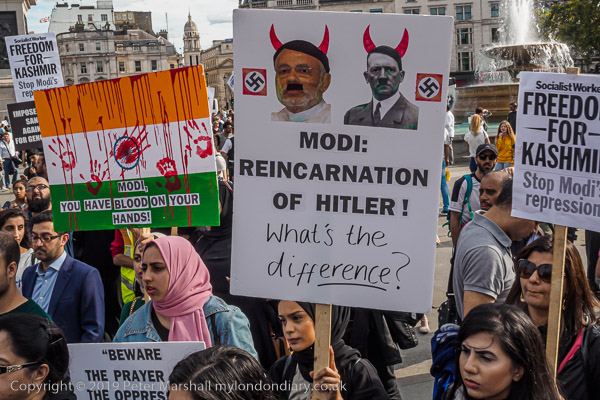
The protesters included groups from both the Indian and Pakistan administered areas of Kashmir. As I arrived there were some scuffles and fake blood was thrown at the side of the embassy, but the crowd was too dense for me to get to the scene, with police also refusing to let me get there.
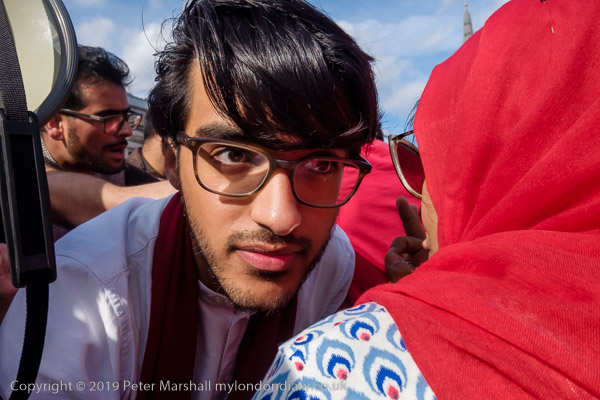
After several hours of protest on Aldwych the crowds began to thin, with many moving away to a further protest in Trafalgar Square which I also covered.
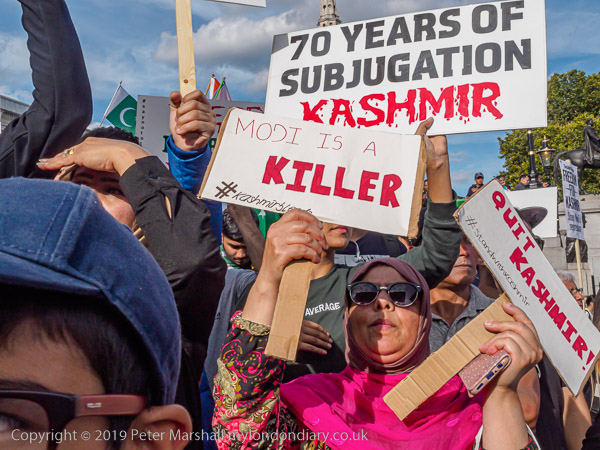
This ‘Stand with Kashmir’ protest had been organised by supporters of independence for Kashmir and heated arguments began when one speaker called for all Pakistan flags to be removed. Several police officers came in to separate the two groups of protesters and allow both protests to continue.
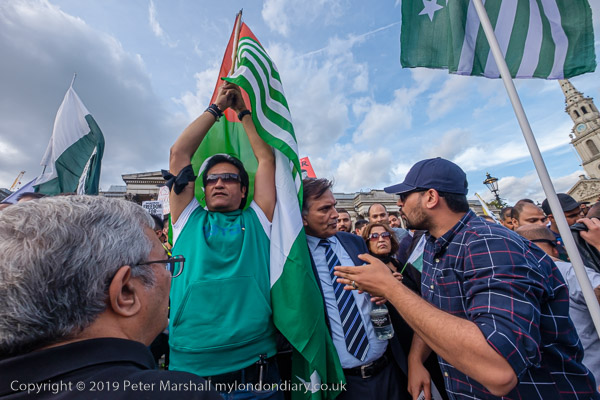
Those who supported Kashmir as a Pakistani state, or a state with a close relation to Pakistan moved towards the top of the steps and continued in a largely separate rally, waving Pakistan flags and with some speeches, including from Sahibzada A Jahangir, spokesman to the Prime Minister of Pakistan.
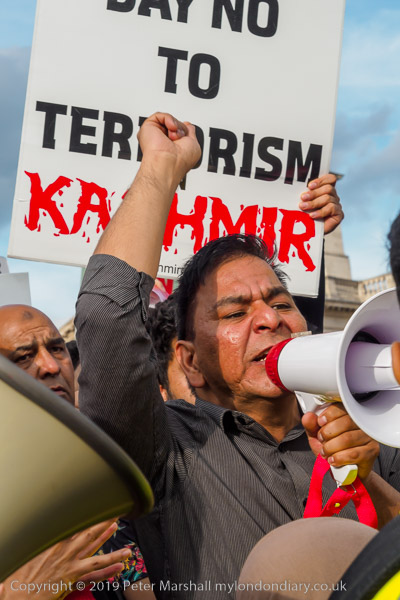
The main rally continued further down the steps, with a larger crowd mainly in the main body of the square.
More pictures from both the Indian High Commission and Trafalgar Square on My London Diary:
Kashmir Indian Independence Day Protest
Stand with Kashmir
